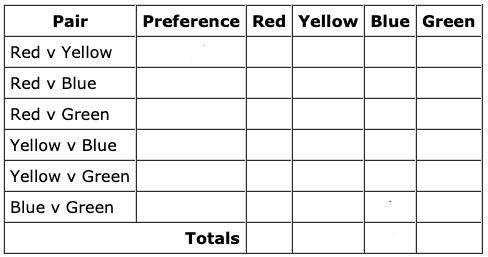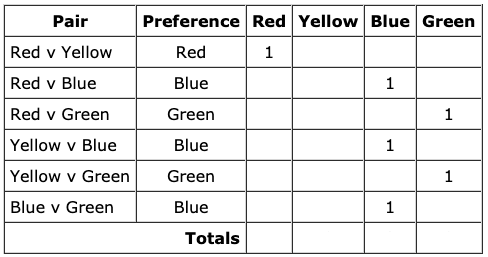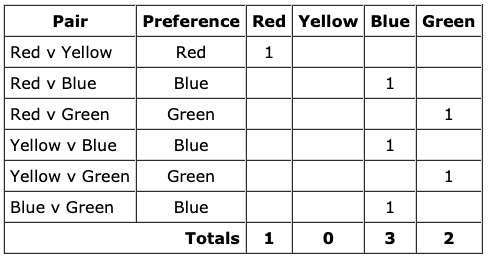Paired Comparisons
How to make the best decision by comparing every possible decision with each other
Paired Comparisons is a method of ranking items by comparing every item with every other item, taking them two at a time. Every time an item ‘wins’ a comparison, it is given a point. The item with the most points is the most important/favourite item.
Buy a:
‘Paired Comparisons’ bundle and save 25%.
Paid subscribers can also download these products from the Learning Pages Digital Vault.
Why use Paired Comparisons?
It provides clarity in complex choices by breaking down big decisions into smaller, easier comparisons.
It reduces bias because side-by-side comparisons make it harder for one option to dominate.
It is particularly useful when criteria are subjective or qualitative (e.g., “Which design looks more professional?”).
It prioritises and highlights the strongest candidates rather than producing a vague list.
How to use Paired Comparisons
Create a comparison grid
List every combination in the first column. Because these are combinations rather than permutations (where the position matters), don’t list, for example, ‘Yellow v Red’ when ‘Red v Yellow’ has already been listed.
To create the combinations for four items, list:
Item 1 v Item 2
Item 1 v Item 3
Item 1 v Item 4
Item 2 v Item 3
Item 2 v Item 4
Item 3 v Item 4
Compare each pair
For every combination, decide which option is stronger and give it a score of 1. Sometimes a weighting system (e.g., 0 for equal, 1 for slightly better, 2 for much better) is used.
The Preference column is optional, but it can make the decisions clearer.
Add up the scores
As you can see, blue would be your favourite colour. The complete ranking is:
1. Blue
2. Green
3. Red
4. Yellow
The number of comparisons increases quite quickly with the number of items. The actual number of comparisons you have to make is given by the following formula (where n is the number of items):
So, if you were comparing ten items, you would have to make 45 comparisons.
My online Paired Comparisons Program significantly reduces the effort required.
Paired Comparisons can do more than help you choose your favourite colour. For example, you could use it for deciding where to go for your next holiday or where you would like to live.
Advantages
Simple and intuitive.
Encourages thoughtful evaluation.
Works with both objective and subjective criteria.
Disadvantages
It can be time-consuming if there are many options.
Results depend on the decision-maker’s judgments—subjective, but structured.
Conclusion
Paired Comparisons is a clear and systematic way to prioritise options when decisions are complex or subjective. By breaking choices down into manageable comparisons, it transforms uncertainty into actionable clarity. Whether you are a manager choosing between projects, a student selecting study topics, or an individual weighing personal goals, Paired Comparisons can help you decide with confidence.







